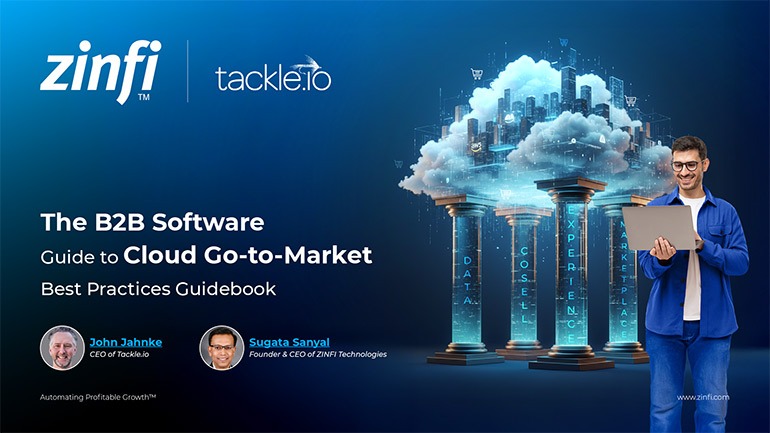Best Practices Articles

7 Ps of Successful Partner Relationship Management
If you are selling through the channel and wondering how to do more with less and how to drive better performance through partner relationship management, then you are not alone. All of us who have lived and thrived in the channel have had to face this fundamental question, and we continue to face it today across the many clients we serve globally. As I step back and look at the core success factors that drive a high-performing channel, I find I can group those factors into seven categories. That’s what we will explore here today.
- Product – If you are selling through the channel and partners, the fundamental reason for that business model is that you have a product or a service that you want to distribute to a broader audience. However, for a group of businesses—your partners—to successfully distribute that product or service, your offering must be unique and stand out.While there are doubtless a lot of me-too products/services that get distributed via channel networks, those relationship are not sustainable and they will eventually negatively impact the financial performances of all involved parties. Therefore, the first most important success factor for partner relationship management is a uniquely positioned product or service that can enable another organization to build a business around it.
- Profitability – Beyond having a unique reason for engagement from an offering perspective, the next most important success factor for partner relationship management is having a truly strong business proposition that defines how the partner organization will make money. It is easy to launch a purely transactional product in the channel, especially in a new market segment; however, those relationships with partners really don’t scale or sustain over time, because at the end of the day it doesn’t drive the partner’s bottom line. This is where a vendor clearly needs to understand how the product or service by itself—or in combination with other offerings—can actually create more profitable opportunities for the partner organizations.
- Placement – Once an organization has introduced a unique offering into the marketplace and created a strong profitable partnership position for its channel, the next focus for successful partner relationship management is to determine how the product or service should be distributed. This varies greatly based on the type of channel. In the case of consumer products and services, this is typically done by territories. That’s why, when you think about franchises, you don’t see two franchises opening up shop next to each other. You typically have to go 5 to 10 miles to find the same franchise, because the vendor carves out the market space.However, in the case of certain business products that are sold through resellers or agents or the like, overdistribution can be a problem. This means multiple partners may be trying to sell to the same business. This creates an unhealthy foundation for partner relationship management. Yes, a certain level of competition is good. But overdistribution can lead to both end customer dissatisfaction and highly frustrated business partners who eventually stop selling a vendor’s products or services.
- Programs – Once the foundation has been built to create a successful partner relationship management framework by launching the right product, creating a profitable framework and having appropriate placement, the next big success factor is the programs that a vendor rolls out. These programs need to cover areas like marketing, sales, training, and product and service promotions. These programs are incredibly important for nurturing the vendor-partner relationship, and for helping partners successfully market, sell and serve the end customer base that they’ve build their business on.Without the right programs, beyond the first few months of the honeymoon, most of these vendor-partner relationships quickly die on the vine. In today’s hypercompetitive market, a vendor selling through the channel needs to ward off the competition to be a true business partner, and a key element in achieving that is to provide functional support to partners in all necessary dimensions.
- Promotions – Once partners are engaged in successful programs, now the real fun of partner relationship management begins. Vendor organizations should set up thoughtful promotions and roll them out through the partner network—not only to empower the partner base, but also to excite the end-user base.The success of these promotions, however, depends on their relevance and timeliness. For a direct marketing or sales organization a successful promotion may last only ninety days; but very rarely do short-term promotions work in the channel. Therefore, for promotions to work and contribute to successful partner relationship management, you must carefully think through the proper scope of the program and its actual duration—typically, six months or a year. In part, that’s because in a broad channel it takes time for all of the partners to find out what is really available and how a program works. Changing promotions on a frequent basis wastes a lot of energy, and ultimately creates partner frustration.
- Profile – Focusing on partner profiles is a relatively new way of managing successful partner relationship management. To get profiling right an organization will actually need to deploy state-of-the-art channel automation. The purpose of profile management is to make sure the appropriate products, programs and promotions are available to the right groups (or profiles) within the partner base.The definition of the right profile may be dependent on several other parameters—e.g., partner certification type, partner vertical market focus, partner reach to a geographic area, partner ability to sell/bundle other solutions from other providers, partner ability to actually market and sell, and so on. All of these variables introduce a lot of complexity. Without intelligent automation, it is almost impossible to manage so many parameters in a connected way and in a dynamic fashion. This is one area where partner relationship management software can make a big difference.
- Performance – Finally, much like the management of in-house employees, successful partner relationship management depends to a large degree on solid performance management. Believe it or not, very few organizations actually get to this point. Most end up acknowledging, “Well, 20% of my channel is responsible for 80% of my sales,” but they never get around to asking, “Why, then, do we have these partners who aren’t successful?”Channel profitability often goes up dramatically when an organization focuses strategically on their most successful producers and finds better ways to enable them to sell more. This is not unlike shutting down a retail franchiser’s unprofitable store. It requires a similar approach, but it’s a step vendors in other verticals rarely take. But failing to take that step poses a big risk. Just as the morale of high-performing employees degrades when they notice that poor performers are getting the same rewards and benefits, channel partners are quick to figure out when an organization doesn’t have a meritocratic system.
Best Practices Guidebook
 Modernizing Channel Marketing: AI and Ecosystem Enablement Best Practices
Modernizing Channel Marketing: AI and Ecosystem Enablement Best PracticesDownload for FREE
 The Channel’s Shift to Partner-Led With AI Best Practices
The Channel’s Shift to Partner-Led With AI Best PracticesDownload for FREE
 Hyperscalers, ISVs, and AI: Shaping the Future of B2B Software Distribution
Hyperscalers, ISVs, and AI: Shaping the Future of B2B Software DistributionDownload for FREE
 Definitive Guide to a Partner Ecosystem-First Sales Strategy
Definitive Guide to a Partner Ecosystem-First Sales StrategyDownload for FREE
 The Partner-Led Digital and AI Transformation Best Practices
The Partner-Led Digital and AI Transformation Best PracticesDownload for FREE
 Startup Talent Recruitment: Hiring Missionaries, Not Mercenaries
Startup Talent Recruitment: Hiring Missionaries, Not MercenariesDownload for FREE
 The Future of Partner Relationship Management with AI in Partnerships
The Future of Partner Relationship Management with AI in PartnershipsDownload for FREE
 Cybersecurity for the 99%: Strategies from the Frontline
Cybersecurity for the 99%: Strategies from the FrontlineDownload for FREE
 Mastering Partner Relationships: A Strategic Approach to Business Growth
Mastering Partner Relationships: A Strategic Approach to Business GrowthDownload for FREE
 Mastering Partner Relationship Management: Keys to SaaS Channel Success
Mastering Partner Relationship Management: Keys to SaaS Channel SuccessDownload for FREE
 Navigating the AI Revolution: Guide for Partners in the Microsoft Ecosystem
Navigating the AI Revolution: Guide for Partners in the Microsoft EcosystemDownload for FREE
 Mastering the Modern Buyers Journey: Sales Leader’s Guide to AI & Engagement
Mastering the Modern Buyers Journey: Sales Leader’s Guide to AI & EngagementDownload for FREE










